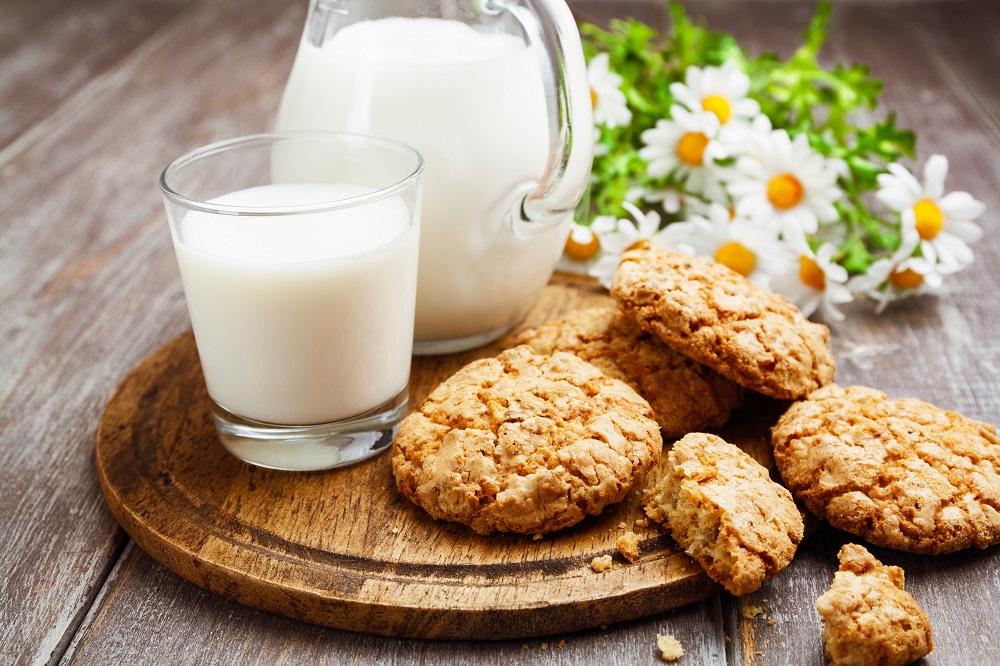There are all kinds of myths about how to increase your breastmilk supply. Your mom swears by dark beer. Your best friend heard eating bananas can help.
It can be overwhelming to dig through thousands of blog posts and weed through the advice from friends and family trying to help. So, what’s fact, and what’s fiction?
First, talk to a doctor or lactation consultant if you think you’re making less milk than your baby needs. It may not be a problem at all. (Here’s how much you actually need to be pumping a day). But maybe you’re looking to build up a stash of breastmilk so you can hand off feedings to someone else. Or perhaps you’ve noticed a decrease in the amount of milk you’re pumping.
In any case, here are some of the more common tactics and whether they turn out to be a myth or true ways to increase your breastmilk supply.
Myth: Eat oats or oatmeal
You hear it everywhere: Oats. There are dozens of recipes for “lactation cookies” and the one common ingredient is oats. The truth is the same with oats and oatmeal as it is for other foods: There’s no evidence that oats (or any other kind of food) can boost your milk supply.
Oats, though, do have a lot of health benefits that are beneficial for lactating women. The experts at Johns Hopkins point out that oats (as well as leafy greens, flaxseed, brewer’s yeast and even dark beer) can have healthy boosts of iron, folate or B vitamins, which might be what keeps the myths going. But as long as you’re eating enough and have a balanced diet, changes to what you eat probably won’t affect your milk production.
Eating oats can’t hurt, though, and everyone needs a cookie now and then. So, though this is a myth, it’s a harmless one.
Myth: Drink more water
This one is tricky. Your body uses the water you drink to make milk, so you do need to drink more fluids than someone who isn’t lactating. According to the Academy of Nutrition and Dietetics, breastfeeding women need to drink about 16 cups of water a day — about 5 more cups than is normally recommended.
However, if you’re not getting that much, don’t worry. You’d have to be pretty dehydrated for your milk production to decrease. According to some studies, even moderate dehydration doesn’t result in less milk. So even though it’s important to drink enough water, it probably won’t boost your supply to drink more. In fact, some say that overdoing it with fluids might actually result in a decrease in your supply.
So, drinking lots of water to increase your milk production is mostly a myth, but being dehydrated can result in fatigue and a host of other ill effects that aren’t good for breastfeeding.
Unclear: Take fenugreek
Fenugreek or fennel seeds are commonly suggested to those looking to up their milk supply. There is anecdotal evidence that fenugreek works, but research is mixed on whether it’s due to psychological or physiological reasons. Fenugreek also can cause side effects including gastrointestinal upset and other issues. You should certainly see a doctor before taking fenugreek or any supplement containing it.
It’s unclear whether fenugreek can help increase milk supply, so take caution and get expert advice if you decide to use it.
Fact: Check your breast pump
If you’re getting less milk during pumping sessions, it might be a good idea to check your breast pump and parts in case they need to be replaced or cleaned. Clogged tubes and broken valves can reduce the amount of milk that is pumped, and old or broken parts may need to be repaired or replaced.
Fact: Change the flange size on your pump
An improperly fitted flange on a pump can cause all kinds of problems, from chafing to low milk production. Make sure the sides of your nipple aren’t rubbing against the flange and that too much of the areola isn’t getting pulled in when you pump.
Fact: Try breast massage
Some find that massaging their breasts before, after or during pumping/feeding increases the amount of milk they produce. There are lots of videos on how to do it, but a simple method to try involves first lightly shaking the breasts with clean hands, then massaging them from side to side. Compressions during feeding/pumping involve forming a C shape on the breast (not the nipple or areola) with one hand and gently squeezing. There are also electric breast massagers intended for use with feeding or pumping.
Fact: Pump/feed for longer or more often
Experts agree that the most tried and true way of increasing supply is to pump and/or feed for longer or more often. It’s a supply and demand thing. The more milk is taken out, the more your body will make. Power-pumping, which is extending a pumping session per day, is one way to boost supply. You can also try pumping after feedings, if your baby is fed from the breast, or switching breasts more often during pumping/feeding.
Above all, don’t stress
Experts can help with medical problems related to low supply, and if you’re interested in finding out more about medications that can help, a doctor can help you determine if there is one that’s right for you. With some solid advice and a dose of patience, you may be able to increase your milk supply.
Whether your breastmilk supply is low, it’s recently dipped or you’re just having trouble increasing the amount you’re pumping, remember that you’re doing your best to feed your little one. There’s no failure here, only natural variances in how the amazing human body works.


